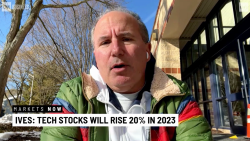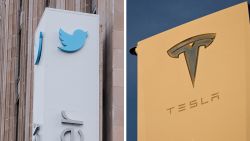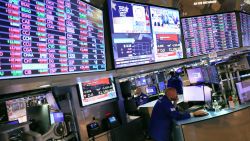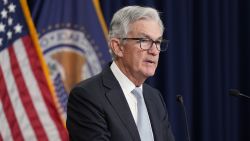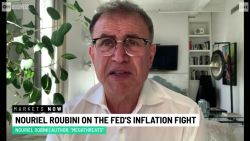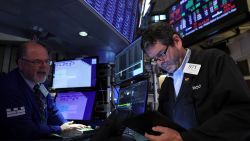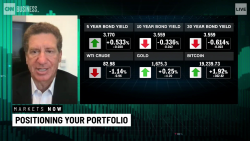America’s manufacturing industry is in contraction. Business spending is soft. And now the biggest chunk of the economy, the US service sector, is growing at its weakest pace in three years.
Recession fears were reinforced on Thursday after the Institute for Supply Management said its non-manufacturing index dropped to 52.6 last month, down from 56.4 in August. This barometer of growth among service providers such as banks, restaurants and hotels is now at the lowest level since August 2016.
Businesses expressed concern about tariffs, a shortage of workers and the direction of the economy, ISM said.
Although the service sector is still expanding, the gloomy report raises concern that America’s manufacturing troubles are spilling over into the broader economy. Slammed by the trade war, US manufacturing activity dropped deeper into contraction in September, the most sluggish month for factories since June 2009.
“The weakness in manufacturing has now infected the services side of the US economy,” Peter Boockvar, chief investment officer at Bleakely Advisory Group, wrote in a note to clients on Thursday.
The Dow dropped about 300 points, or 1.1%, minutes after the report was released, although it later bounced off those levels.
“The more growth slows in the US, the greater the likelihood that a shock pushes the economy into recession,” said Gus Faucher, chief economist at PNC.
Deere cuts 163 US factory jobs
The manufacturing industry has so far taken the brunt of the trade war, which is exacerbating the global economic slowdown. Factory activity has declined and some manufacturers are turning to layoffs.
Deere (DE), the world’s largest farm equipment maker, announced indefinite layoffs on Tuesday for 163 US manufacturing workers at plants in Illinois and Iowa because of “decreased demand.”
Deere and its farming customers are caught in the cross fire of the US-China trade war. China has retaliated against US tariffs by slashing its purchases of soybeans and other agriculture products from America’s heartland.
“The trade war has been very much to blame,” said Danielle DiMartino Booth, CEO of Quill Intelligence. “Manufacturers have told us as much.”
More than 10,500 jobs have been cut this year by US companies citing “trade difficulties, according to outplacement firm Challenger, Gray & Christmas. That’s in addition to 2,458 layoffs by US companies that blamed “tariffs.”
Service sector hiring slows to 4-year low
Until recently, the service sector–which makes up about 80% of the economy–was holding strong because of robust consumer spending and low unemployment. But Thursday’s report shows that the service industry is slowing, too, in great measure because of the trade war. The fear now is that a downturn in services will lead to layoffs and market turmoil that forces consumers to slash spending.
Four of the 18 industries in the service sector are now in contraction, including real estate, wholesale trade and educational services. That’s up from just one industry, wholesale trade, which contracted as of August.
Some survey respondents pinned the blame on the US-China trade war, which is raising costs on businesses, disrupting supply chains and denting confidence.
“While Chinese tariffs are understandable, they are impacting our supply chain decisions,” one service-sector executive said in the ISM survey. “At this point, we have not passed on tariff costs to our customers, but we are evaluating all options.”
Some businesses are already cutting jobs. ISM reported employment declines in educational services, finance & insurance and wholesale trade. Overall employment is still expanding, albeit barely. ISM’s service-sector employment index dipped to 50.4, the lowest since February 2014, according to Refinitiv.
“There is only so much pain the manufacturing sector can handle before it starts to bleed into services,” said DiMartino Booth.
National jobless claims remain very low and the US unemployment rate is sitting at just 3.7%, near the lowest in a half century. However, unemployment claims have ticked higher the last three weeks in a row. And more than half of US states and the District of Columbia are experiencing an increase in jobless claims, according to DiMartino Booth.
Boockvar said the low level of firings makes sense because employers typically trim hours and slow hiring before resorting to pink slips.
“Hopefully it goes no further than this,” Boockvar said, “because if we then see an increase in firings as companies shift to cut costs and protect profits, then we will make the final shift towards a recession.”
Some businesses in strong parts of the economy are suffering from a shortage of workers.
“We are very busy right now [and] expect to be so for the next 12 months,” a construction executive said in the ISM report. “We are still very shorthanded with qualified labor.
Fed to the rescue?
Despite the trade turmoil, retailers remain optimistic. The National Retail Federation on Thursday predicted strong sales growth this holiday season because households remain in good shape.
But investors will be on high alert for more signs of trouble in the broader economy in Friday’s jobs report, which is expected to show a rebound in hiring during September.
More trade challenges could be ahead as a new front in the trade war opens up.
The Trump administration announced plans this week to impose tariffs on $7.5 billion worth of European exports, including olives, Parmesan cheese and French wine. The European Union has threatened to retaliate.
Wall Street is now betting the Federal Reserve will need to come to the rescue with more rate cuts to offset trade tensions and the weakening economy. The market is pricing in a 93% chance of a quarter-point rate cut by the Fed at its October 30 meeting, compared with 49% a week ago, according to the CME Group.
Although easy money could help boost housing and auto sales, rate cuts don’t solve the underlying problem.
“Monetary policy cannot fix bad trade policy,” said Art Hogan, chief market strategist at National Securities Corporation. “It’s not like the cost of capital is causing corporations not to borrow. It’s the uncertainty caused by the trade war.”



